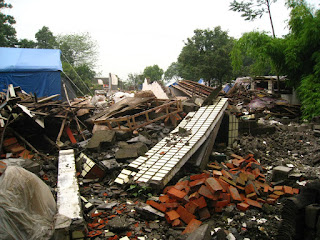
In Southern Sudan this past March, we spent four weeks running medical clinics and helping with the construction of an orphanage. It was my first trip to Africa and it's true to say this continent gets under your skin... in a good way. Here is something I wrote while there...
Darfur is a topic of conversation for reasons other than the internally displaced persons, or IDP's, we have seen in our medical clinics. There are nations vying for oil rights, who turn a blind eye to the corruption and treatment of the nation’s people by their own government. The Sudanese I spoke to have little hope or trust in the government. Their expectation is that aid monies sent to Southern Sudan will not reach them. The true extent of this comment remains to be seen, however one thing is for sure. While both are important, visiting these people in person brings more results than simply sending funds.
Whilst it is not Darfur, the region of Terekeka is similar for many reasons. Their primary needs are for increased medical assistance and education. The name Terekeka means, "The people who have been forgotten." The people of Terekeka chose that name for themselves. At the beginning of our time in this area, a local chief told us this fact. But he also said, "Now we feel we have been remembered."
The same chief also said, "It is good that you are here. Our people live like animals, at least now you can help them medically." The people live a primitive existence in a harsh and hot land. Where the most common illness in Western children might be bronchitis, the most common illness in the children of Terekeka is malaria.
It is difficult to reach by road. The distance from nearby Juba is only 50 miles, but takes four hours to drive. As it is with a large number of people in Southern Sudan, the community of Terekeka are primarily IDP's. The war of twenty-one years has left a trail of destruction evident to all. Even the wildlife deserted as the war took its toll on the landscape.
Of the people I spoke to, their main cry is for education and medical assistance. Sardia Dahut, a social welfare worker says, "As an orphan, I was forced to work from a very early age and not allowed to finish my education." Her spirit pushed her to try and bring change, but in a land where the women are widows and the men have either died or left, that is a difficult task.
The group I was with in Southern Sudan have over the past seven years, built an orphanage, clinic, school and church in the town of Yei. They now plan to do the same in Terekeka. Dennis Klepp, co-founder of Harvesters says, "Change doesn't seem possible, but every time someone comes to help they plant a seed of hope, because they have remembered the people. As more people come, more hope rises and eventually change will begin to occur." People who have been rejected and forgotten grow stronger when others reach out and remember them. Terekeka is a community that needs to be remembered. Southern Sudan is a country that needs to be remembered.
 Piles of rubble line damaged roads. The team van comes to a sudden halt on a bridge and people gasp, as in front of the vehicle they see a gaping hole caused by the recent May earthquake. The van skirts around and continues on, destroyed infrastructure is commonplace in this part of
Piles of rubble line damaged roads. The team van comes to a sudden halt on a bridge and people gasp, as in front of the vehicle they see a gaping hole caused by the recent May earthquake. The van skirts around and continues on, destroyed infrastructure is commonplace in this part of 



